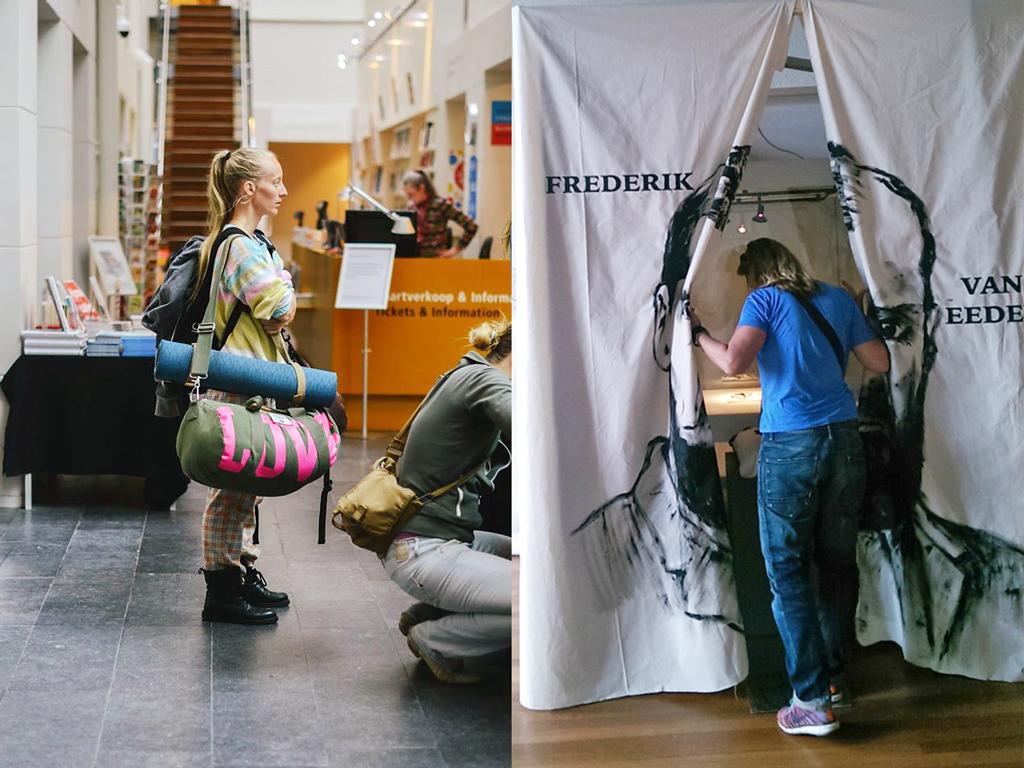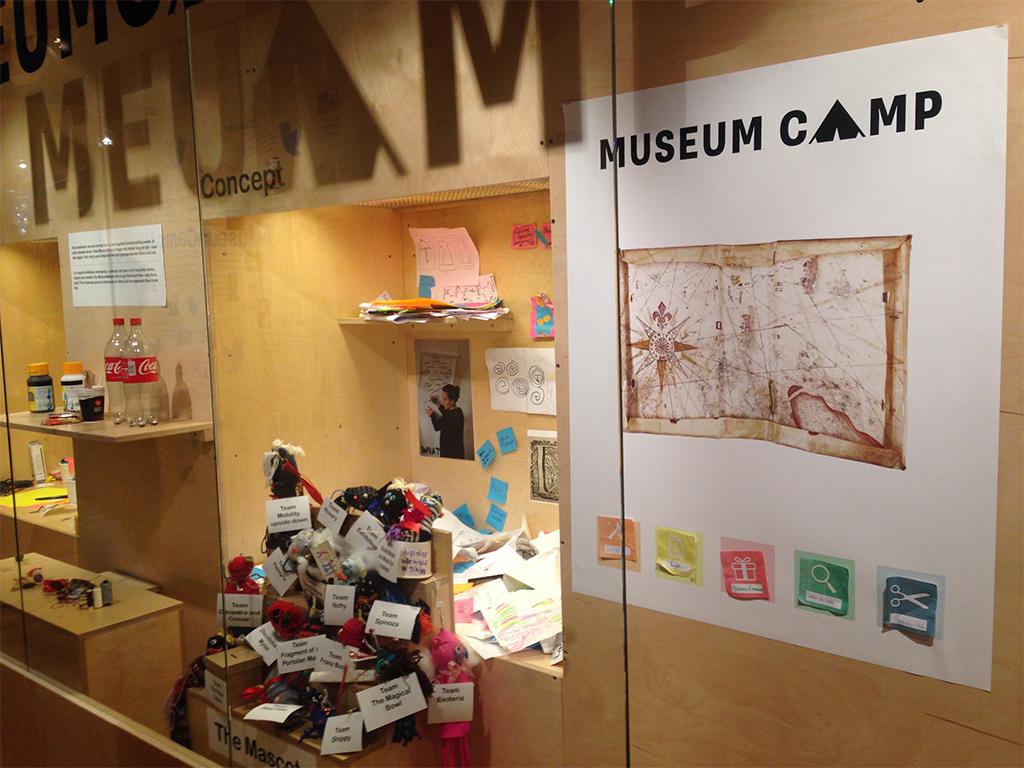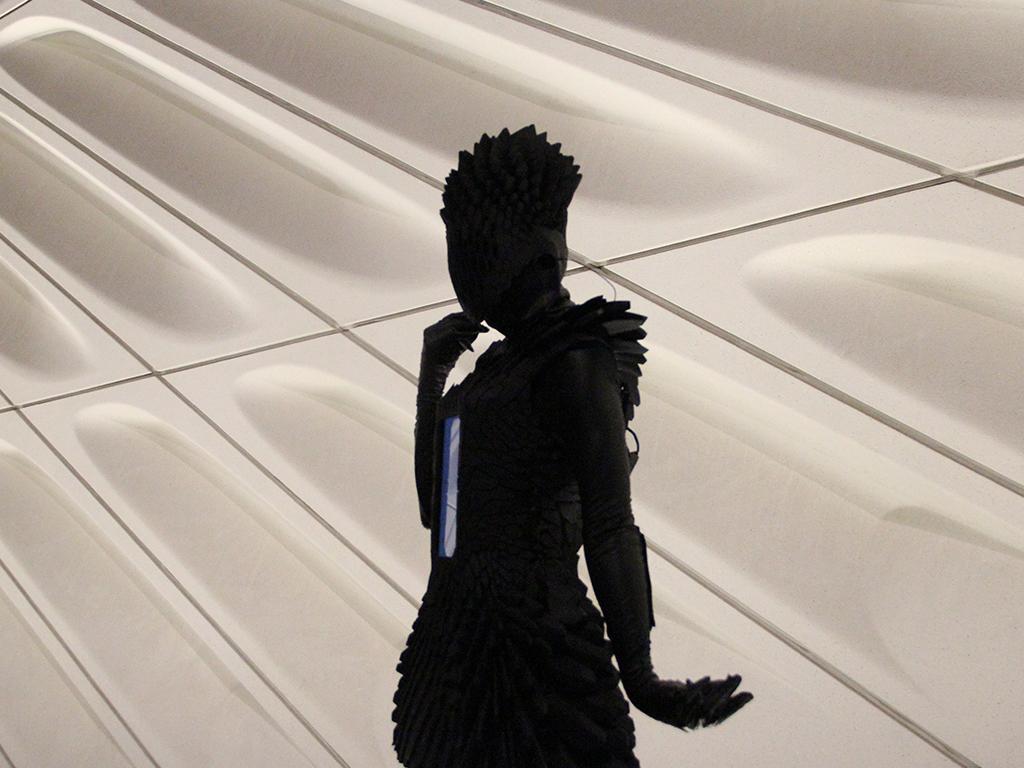Recently, Waag co-organized the first ever MuseumCamp Amsterdam. Over 70 participants worked really hard for three days to build 17 interactive installations, for 17 selected objects. Participants from the museum domain, exhibition designers and others registered for this three day pressure cooker to explore the potential of digital technology for on gallery museum exhibits. One of the technologies available for the participants to play with was the toolkit developed within the European meSch project.
MuseumCamp is an initiative of Nina Simon and the Santa Cruz Museum of Art & History to host heritage professionals in the museum for professional development. The Amsterdam edition was held at the Allard Pierson Museum. Concept coaches, tech coaches and meSch coaches were there to help participants build stuff. The atmosphere was crazy. But the great positive vibe created a wonderfully eclectic exhibition.
The 17 objects were selected beforehand by curators of the Allard Pierson Museum and the Special Collections. They chose objects they found exciting, beautiful or touching. One of the participants has been documenting the objects and installations (not complete yet) and video taped the last details before the opening.
For the meSch consortium, the camp was a test case to have cultural heritage professionals work independently with the meSch tools, a so-called ‘Authoring Feast’ of which we will organise a number before the end of the project. Overall feeling is that the participants were very enthusiastic about meSch after hearing about the possibilities in the kick-off Friday night workshop. Four concepts were immediately identified as ‘mesch-able’, but one group in the end went in another direction, as they wanted a more elaborate user interface that required more specific programming.
The three installations in which meSch was used:
- a mobility showcase; illustrating the mobility of people, ideas, art styles and objects in the period 1000-335 BC - the installation consists of a map with touch points attached to the underside of the display case inviting visitors to crawl under the vitrine
- a display on a Spinoza book; Spinoza’s books were printed anonymously but based on research we are able to identify him and the printer - the installation presented the books, their context and parts of the research through projections and animations;
- a display on the Otto Lanz death mask; reviving the versatile and remarkable personality that lies behind the mask - using a 3D object to move between places on a map of Amsterdam that relate to him.
The three concepts asked for new recipes that were created on the spot by the meSch team, using mostly the hub, the media nodes and NFC rings. Other technology in the installations included MaKey MaKey, conductive ink, lots of audio, conductive thread, and projection mapping.
Though it was hard work for everybody, by Sunday night, all installations worked (in some cases more or less :-)). The APM team worked hard to get everything working again on Monday and rearranged some tech or presentation elements to improve things. The exhibition is open throughout the summer.
The event has been covered in the largest Dutch newspaper, De Telegraaf, on Folia.nl and in Het Parool (Dutch news paper focussing mostly on Amsterdam). Museumpodcast made a podcast about #MuseumCampNL (Dutch only).
All in all, I think this gives prove that meSch is valuable for the heritage community and that we should be able to hold some more, very exciting authoring feasts after summer.
MuseumCamp Amsterdam was presented in partnership with Allard Pierson Museum, Waag, The DEN Foundation (Digitaal Erfgoed Nederland/Digital Heritage Netherlands), University of Applied Sciences Amsterdam, Crossmedia Research Group, Reinwardt Academy
MuseumCamp was sponsored by izi.TRAVEL. MuseumCamp was powered by: Netherlands Museum Association, meSch (Material Encounters with Digital Cultural Heritage), CEMEC (Connecting Early Medieval European Collections), Digital Museum Lab (Mondriaan Foundation)
Objects were provided by: Allard Pierson Museum, Special Collections University of Amsterdam.
This project has received funding from the European Union’s Seventh Framework Programme for research, technological development and demonstration under grant agreement no. 600851.


